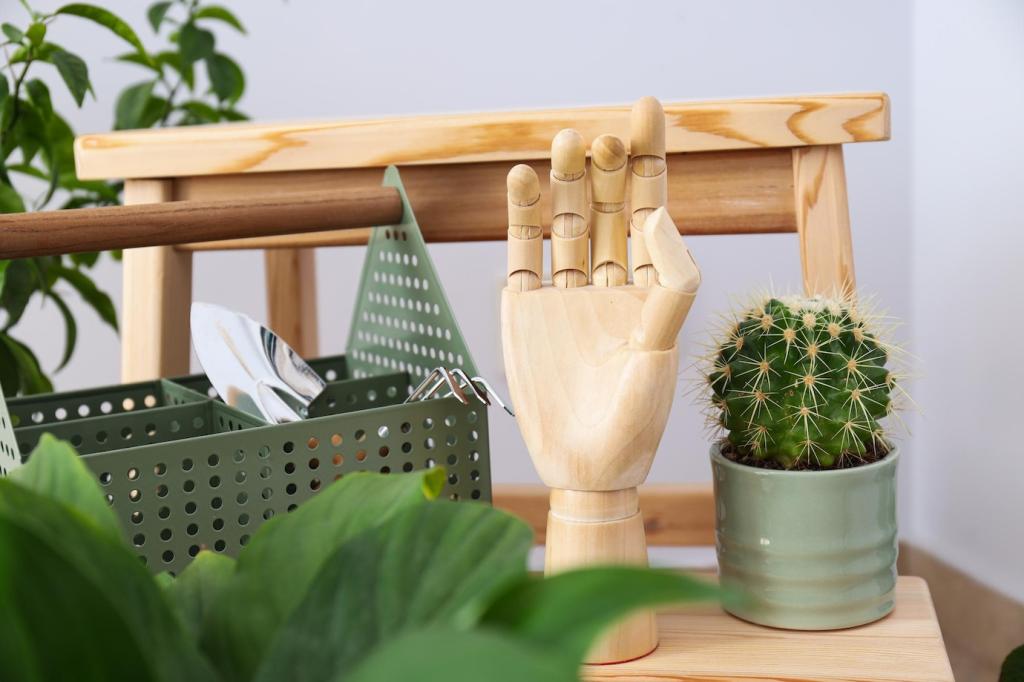
Biodegradable Materials in Interior Design
As environmental awareness becomes an increasingly important priority, the interior design industry is embracing biodegradable materials as a sustainable alternative. These materials naturally decompose, reducing waste and minimizing environmental impact, while bringing warmth, authenticity, and innovative aesthetics into living and working spaces. Embracing biodegradable solutions strengthens a commitment to both style and responsibility, enabling designs that support a healthier planet for generations to come.
Environmental Benefits
The use of biodegradable materials greatly reduces the environmental burden traditionally associated with interiors. When such materials reach the end of their life cycle, they break down naturally without leaving harmful residues, thus avoiding the long-term accumulation of synthetic substances in landfills. Moreover, many biodegradable options are derived from rapidly renewable resources, which further lessens the strain on our planet’s limited raw materials. Integrating these eco-friendly alternatives in interior design not only helps in cutting down pollution but also encourages the responsible stewardship of natural habitats and resources, making a positive impact on both the environment and human well-being.
Contribution to Indoor Air Quality
Biodegradable materials such as natural fibers and organic plasters do not emit harmful volatile organic compounds (VOCs), making them a healthier option for interior spaces. The absence of toxic off-gassing preserves the integrity of indoor air, providing a living or working environment that supports comfort and wellness. Furthermore, many of these alternatives possess natural antimicrobial or humidity-regulating properties, which can further enhance the quality of indoor air. Using such materials makes interiors not just environmentally sound but also safe for their occupants, catering to a growing demand for wellness-oriented living.
Aligning with Global Sustainability Goals
Adopting biodegradable materials directly supports international sustainability objectives, including those outlined by the United Nations. These practices foster reduced carbon footprints, responsible consumption and production, and strategies for waste minimization. For organizations and homeowners alike, integrating biodegradable choices into design reflects a commitment to both local and global ecological accountability. This approach improves the sustainability credentials of projects, opening doors to green certifications and resonating with environmentally conscious clients and stakeholders who prioritize socially responsible design decisions.
Previous slide
Next slide
Popular Biodegradable Materials Used in Interiors
Bamboo in Modern Design
Bamboo has surged in popularity as a staple in modern interiors due to its rapid renewability and remarkable strength. It serves as an excellent substitute for hardwood, suitable for flooring, wall coverings, furniture, and decorative accents. Its natural grain and warmth contribute to welcoming, stylish environments without sacrificing ecological benefits. What makes bamboo stand out is its ability to fully decompose at the end of its lifecycle, as well as its low requirement for fertilizers or pesticides during cultivation. Designers appreciate not only its sustainability but also its flexibility, as bamboo can be processed into a variety of forms and finishes to suit both contemporary and traditional styles alike.


Cork for Comfort and Acoustics
Cork, harvested from the bark of cork oak trees, is an exemplary choice for sustainable interiors. Revered for its renewable harvesting process—which does not harm the tree—cork offers natural elasticity, making it comfortable underfoot and resistant to wear. It’s uniquely effective for applications such as flooring, wall tiles, and acoustic panels, providing both visual warmth and sound absorption. Post-use, cork biodegrades effectively, returning nutrients to the earth. In addition to its sustainability, cork’s hypoallergenic properties and ability to regulate temperature enhance the health and comfort of interior environments, making it a smart and progressive material selection.
Innovations and Advancements in Biodegradable Design
Bioplastics in Furnishings
Bioplastics, derived from renewable biological sources such as corn starch or sugarcane, are redefining the world of interior furnishings. Unlike conventional plastics, these materials are engineered to decompose without leaving persistent toxins. Designers have embraced bioplastics for producing everything from light fittings to seating, bringing versatility and a contemporary edge to interiors. Continued research is enhancing their usability and strength, even as their environmental credentials appeal to a new generation of eco-conscious consumers. The increasing adoption of bioplastics signals a future where stylish interiors and ecological integrity are perfectly aligned.
Mushroom-based Panels and Tiles
One of the most intriguing innovations in biodegradable design is the use of mycelium—the root-like structure of fungi—to create durable interior panels, tiles, and insulation. Mycelium materials are cultivated on agricultural waste, forming robust, lightweight products that are naturally fire-resistant and compostable at the end of their lifecycle. These panels deliver a distinct organic texture and are easy to customize in terms of shape and finish, offering extraordinary creative possibilities. By integrating mushroom-based products, designers provide clients with the dual benefit of avant-garde aesthetics and stress-free post-use disposal.
Algae-derived Paints and Finishes
Algae has emerged as an unexpected hero in the field of sustainable interiors, especially in the creation of paints, dyes, and finishes. Formulated from natural pigments extracted from certain algae species, these products offer vibrant and durable color without the environmental hazards associated with synthetic chemicals. Algae-derived coatings have minimal environmental impact during production and break down safely upon disposal. Their natural origin ensures that they are low in harmful emissions, making them perfect for enhancing indoor air quality. Embracing algae-based finishes reflects a forward-thinking approach to design that values wellness, artistry, and responsibility.
